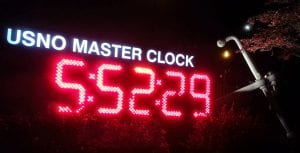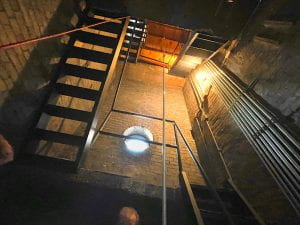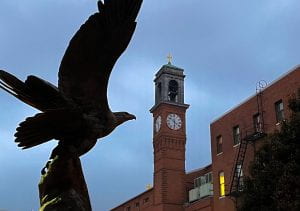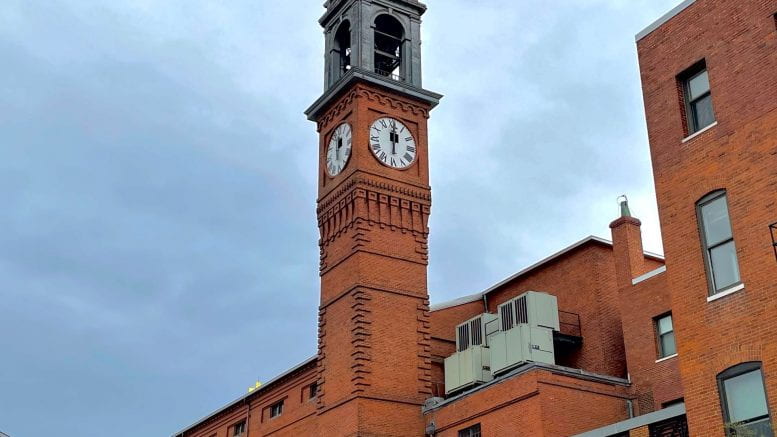By William Thompson—
Gonzaga College High School’s most iconic image is the clock tower at the very center of life on Eye Street. From the day we first step onto campus, the clock tower provides a special and powerful image of Gonzaga held until the day we graduate, and beyond. Often, we just walk by or hear the bells ringing without ever stopping to think about how or why our clock tower came to be.
Originally, clock towers did not have clocks, but simply had bells that served other important purposes. The bells were put high up in towers so that their sound would travel far and wide to let people know it’s time for work, worship, or to sound an alert. The Gonzaga clock tower stands at about 90ft tall. Interestingly enough, the word clock comes from the German word, “Glocke,” which means bell.
The oldest working clock tower in the world is at the Salisbury Cathedral in Southern England, which was built in 1386. The Gonzaga clock tower may not be the oldest, but it is among the oldest in the area. According to our President Fr. Stephen Planning, SJ—an avid clockmaker and all things that tick and tell time-enthusiast— the tower was built in 1859 and the clock was added in 1861, by Brother Blaise Walch, a Jesuit clockmaker.

A photo of the master clock display at the Naval observatory of the vice president’s residence in Washington, D.C. (photo by Ben Simon).
According to The Washington Post, our clock tower has some famous neighbors in Washington, D.C. With the Old Post Office, the Four Seasons Hotel in Georgetown, the master clock at the Naval Observatory of the vice president’s residence and Calvary Baptist Church.
While sharing the limelight with some other famous clock towers, the Gonzaga clock tower shares resilience with the Calvary Baptist Church clock tower. In 1913, Calvary’s tower was blown away by a tornado, similar to the damage caused to St. Aloysius Church by a tornado in 2017. Mother Nature struck Calvary Baptist Church again in 1947 when a lightning strike and fire destroyed the clock and the tower. Again, our clock tower shares a similar fate.

The picture above shows the view looking up at the interior of the clock tower before the inclined stairwells leading to the top (photo by Will Thompson).
During a tour of the tower in March, Fr. Planning told us that our clock tower was also damaged by a fire in the early 1900s. Like Calvary Baptist Church, our clock tower was rebuilt, but the top of our tower had to be replaced with a different shaped top. If you are fortunate enough to tour the tower, as I was, you can still see where the fire charred the wood and bricks on the interior of the structure.
Both Calvary Baptist and Gonzaga’s clock towers have long been prominent reminders of faith and time in Washington, DC.
The Washington Post also states, “Legend has it that John Wilkes Booth checked his watch against it [Calvary Baptist’s clock tower] before going into Ford’s Theater and assassinating President Abraham Lincoln.”
So, thankfully, our historical similarities with the Calvary Baptist tower end with fires and tornados, but there is another old story about Gonzaga’s clock tower that’s quite interesting. According to an old article written by Jesuits titled “The Famous Gonzaga Clock from Woodstock Letters”, “Old Washingtonians tell about the day all Washington was late for work, and even the government were slow in starting–because Brother Walch’s Gonzaga clock went awry.” At the time, our clock tower was even more famous because it was the primary timekeeper for over sixty thousand government workers who used the clock throughout each day. The story even quotes a news service saying, “There is in the bell tower of St. Aloysius’ Church, a famous old clock, which to many in the in the National Capital, is immensely more important than the amazingly accurate timepieces at the Naval Observatory.”
So, why did Brother Walch decide to build a clock? Why not a crucifix, or a “G,” or a statue of Saint Aloysius? We may never know, but Brandie Morris, the Director of Marketing for a leading public clock tower builder, said it well, “A clock is an architectural beauty point.”
Clock towers have always been some of the most iconic landmarks across the world. While Big Ben in England and the Saint Mark’s clock tower in Venice, Italy might come to mind, many cultures across the globe share the majesty of great clock towers. For example, the 280-foot tall Rajabai Clock Tower in Mumbai, India has stained glass windows and limestone sculptures. According to Architectural Digest, the Makkah Royal Clock Tower in Saudi Arabia is the world’s third-largest building at 1,972 feet tall. With 21,000 LED lights and speakers that can be heard four miles away, it issues calls to worship, five times every day.

The tower has sometimes been used for decoration or celebrations. If you look closely at its faces, you can see that 4 o’clock is written as “IIII” instead of “IV” (photo by Will Thompson).
Compared to speakers that powerful, Gonzaga’s bells sound oh so heavenly. Without LED lights or statues, our clock tower is beautiful, symbolic and reassuring to the Gonzaga community and our neighbors. It is also unique and considered to be of the highest quality and craftsmanship.
The next time you cross the courtyard or take a stroll down Eye Street, instead of just walking by our majestic tower, take a close look at the clock face. You might notice that the number four is IIII, instead of the roman numeral IV, like the other numbers. Fr. Planning explained that this is not a mistake. It is actually the correct touch for a Roman clock face and indicates that our clock is of superior design and construction.
Even though we all have smartphones and watches, it is special to see and hear our clock tower because it connects us to our past and grounds us in our faith.
According to Fr. Planning, “It’s a symbol of the school. It has a strong sentimental value and provides fond memories for the students.”
Gonzaga is not just a place of learning, and our clock tower is not just another clock. It was built by Jesuits, like Brother Walch, for a purpose. The vibrant community and school spirit we carry are really sustained by our teachers, staff, and the priests of Gonzaga, and the clock tower carries our traditions just as the graduates who have signed their names on its walls through the years do too.
Most of all, if we take the time to look and listen closely each time that bell rings, we may remind ourselves how fortunate we are to attend a school that has blossomed into such a wonderful force for meaning in the lives of our students and community, and service to God and the world around us. Let that clock remind you that we are only able to complete our mission today because of those who have gone before us, ultimately beginning with the path Jesus has left for us to follow; so that we may always be Men for and with Others.

The clock tower is an astonishing symbol of the traditions, religion, and brotherhood at Gonzaga. It is truly an artistic time capsule of history buried at the center of our nation’s capital (photo by Will Thompson).

What a beautifully written article, Will. I learned a lot about our iconic clock tower and I love that you tied it in to the Ignatian mission so smoothly. Thank you.